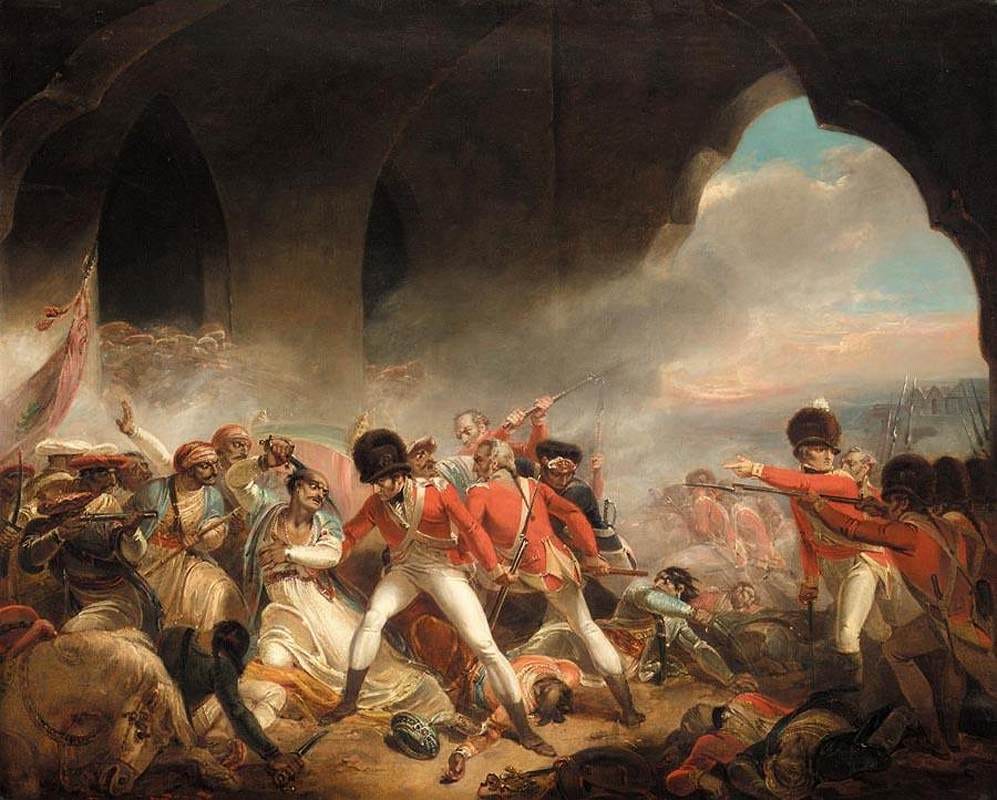Sharpe's Tiger, by Bernard Cornwell (1997).
Set during the final British war with Mysore (1799), Sharpe’s Tiger follows the eponymous hero and a cast of British and Indian characters—some historical, some not—as they vie for control of the city of Seringapitam. Its major theme is not the clash of civilisations, but rather the interpersonal rivalries, alliances, and friendships that are born or broken in the chaos of war.
Richard Sharpe is an action hero. Gritty, skilled, and with a willfulness that runs him afoul of authority, he is close to the platonic ideal. His lowly origins put him in constant tension with the class hierarchy, but Sharpe is a protagonist who overcomes exceptional odds. The pathos of the novel is witnessing the dangers this young private is faced with, and the excitement of watching him overcome them.
As a novel, Sharpe’s Tiger is fun, exciting, and has a hearty sprinkling of grimy humour. Sharpe is a great character, as is his nemesis Sergeant Obadiah Hakeswill. What makes the latter so menacing (aside from the twitching and open ranting to his dead mother) is his ability to perfectly exploit military culture and regulations to pursue his own perverse aims—his fawning affection for officers used to cover his pursuit of rape, theft, and jealous vendettas. This is a persistent theme of the novel. No characters outside the general’s tent care for the war’s geopolitical significance.
By coincidence, I read this novel alongside William Dalrymple’s non-fiction book ‘The Anarchy: The Relentless Rise of The East India Company’. Though they get a showing in Sharpe’s Tiger, Darlymple’s account shows how the majority of the people fighting for, dying for, and maintaining the East India Company were Indians themselves. Sepoys were the EIC’s main military success, but its economic power stemmed in no small part from the Indian bankers who financed its operations. After some critical threshold of control had been crossed, the power of India flowed inexorably to the EIC—and it did so not for the EIC’s brute force, but because Indian populations and wealth began to acquiesce to and abet the company.
Here is where Sharpe’s Tiger shines in its portrayal of the Fourth Anglo-Mysore War. Sharpe ends up saving many lives during the British assault on Seringapitam through daring and exceptional feats. Yet there is always the feeling that he is not steering history, but being carried along by it—the siege would have been bloodier, but still successful, regardless of Sharpe’s actions. Cornwell portrays the intimate details of the Darlymple’s grand history. For all Sharpe’s heroics and Hakeswill’s machinations, they are two poor, uneducated soldiers with as little control over the war as the thousands of other redcoats, sepoys, and Tipu’s tigers fighting in it. They are actors in a play written by others. For all but a rarefied few involved in and affected by the British conquest of India, there was no agency in the face of the history unfolding around them, even for brash, tiger-slaying heroes like Private Richard Sharpe.
-Ben Shread-Hewitt





